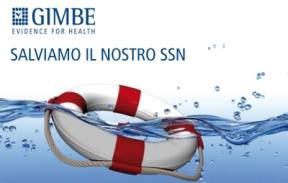All news by therapy
Long-term evolution of neuroendocrine cell hyperplasia of infancy: the FRENCHI findings
Children's interstitial lung diseases (chILD) cover many rare conditions that mainly affect the lung parenchyma, leading to impaired alveolar gas exchange. Neuroendocrine cell hyperplasia of infancy (NEHI) is an interstitial lung disease whose long-term outcome is considered positive from very few studies including heterogeneous populations.

The authors report data from a 54-patient cohort followed up in the French network for rare respiratory diseases (RespiRare). Demographic characteristics as well as data about respiratory and nutritional evolution were collected at the time of the patient’s last scheduled visit. The mean duration of follow-up was 68 months (ranging from 5 months to 18 years). Fifteen patients (27.8%) were considered clinically resolved. Wheezy exacerbations with hospitalizations were reported in 35 patients (55%), while asthma was diagnosed in 20 (37%). Some degree of radiological improvement detected on chest CT scan was noted in 25/44 (56.8%). Pulmonary function tests showed an obstructive syndrome in 8/27 (29.6%). A sleep disordered breathing was considered rare (2/36, 5.5%). Oxygen weaning occurred in 28 of the 45 patients initially requiring oxygen supplementation (62.2%) and was age-dependent (35.7% under 2 years, 70.5% between 2 and 6 years, and 100% after 7 years). Moreover oxygen duration was linked to a biopsy-proven diagnosis (p = 0.02) and to the use of a nutritional support (p = 0.003). Systemic steroids were largely prescribed at diagnosis, with no evident respiratory or nutritional effect during follow-up. Among 23 patients with an initial failure to thrive, 12 (52.2%) had no weight recovery. Initial enteral feeding (17/54, 31.5%) was stopped at a mean age of 43 months (3 to 120), with no effect on cure and oxygen liberation at the last visit.
In conclusion the authors stated that their results show that NEHI has a globally positive, but unequal, improvement over time. Further prospective studies are needed to better clarify the different trajectories of patients with NEHI.
REFERENCE
Dervaux M, Thumerelle C, Fabre C, et al. Long-term evolution of neuroendocrine cell hyperplasia of infancy: the FRENCHI findings. Eur J Pediatr. 2022 Nov 30. doi: 10.1007/s00431-022-04734-y. Online ahead of print.






